3) Add Materials
At this stage, our experiment protocol contains the default workflow separator "Reaction" and the reference starting material:

Now let's add a reagent, say 'Triethylamine'. The Protocol Toolbar, located just below the protocol, allows us add materials and other items to the protocol. So move the mouse over the Add Material button (no mouse click required), and the popup menu below opens.
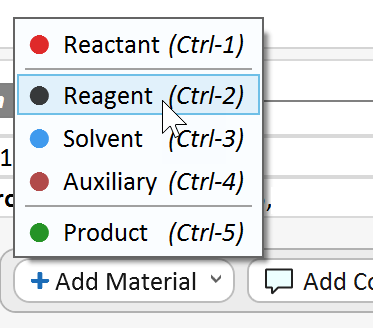
Select Reagent from above popup menu, which opens the Add Reagent dialog. In this dialog, for our example, first enter '1.5' and select 'eq' (equivalents). Now type 'tri' into the name field. This opens a list of reagents originating from the built-in materials database, starting with the currently typed characters.
|
Tip: Tick the Subtext checkbox to search for materials containing the typed characters within their name. Thus, typing 'brom' will also find materials like 'Methylbromide' |
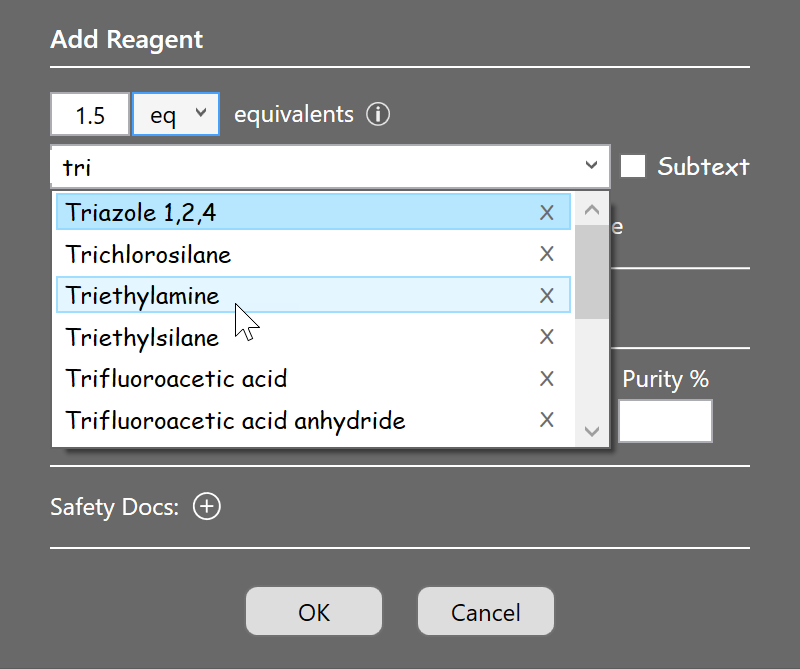
|
The Materials Database: Above materials drop down menu is generated from a built-in materials database, which comes with approximately 200 pre-configured and commonly used materials and their properties (molecular weight, density, safety documents, etc.). It also grows with with every use of a so far unknown material in the experiment protocol. See the Materials Database topic for more detailed information. |
Select 'Triethylamine' from the appearing reagents list - either by clicking it, or by selecting it via the up/down arrow keys followed by RETURN. This populates the molecular weight and the density fields of the selected reagent based on the material database values:
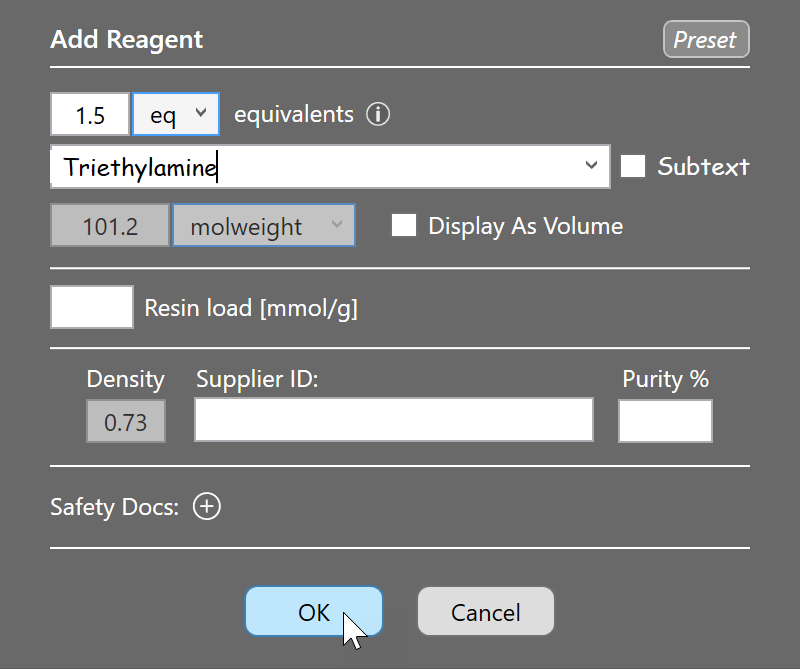
Click OK when done. Please note that you can also CTRL-click a material from the list, which closes the dialog and adds it directly to the protocol. In both cases, the specified reagent now appears as a protocol element, complete with the calculated weight and mmol amounts, based on our specified 1.5 equivalents.

The addition of solvents and auxiliaries (e.g. silica gel, charcoal, sodium sulfate) works in an analogous manner. Try it, and your protocol might look like this afterwards:
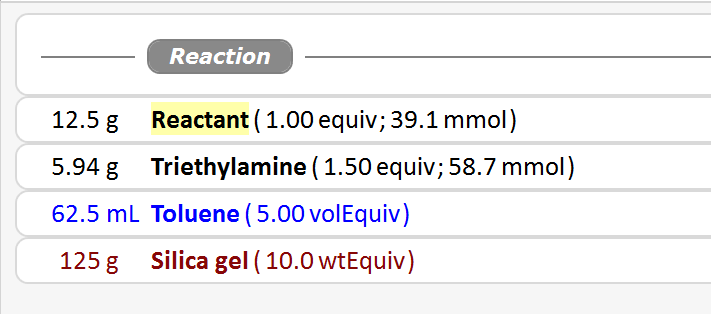
In above example, all materials were specified as equivalents (i.e. relative to the reference starting material mmols). When designing an experiment, chemists typically thinks in equivalents - not only for reagents, but often also in solvent volume equivalents (vq), or auxiliary weight equivalents (wq). Of course you may also specify material weight or volume units from the unit dropdown menu. Its units vary by material type. Below is an example for Reagents.
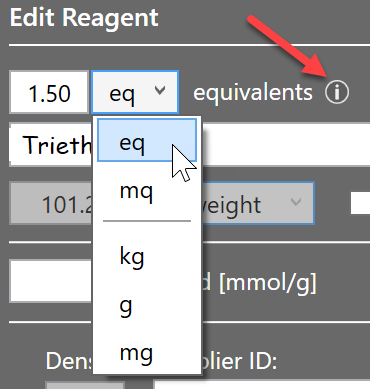
|
Tip: When moving the mouse over the info button (i) next to the unit menu, the exact definition of the current unit is displayed. |